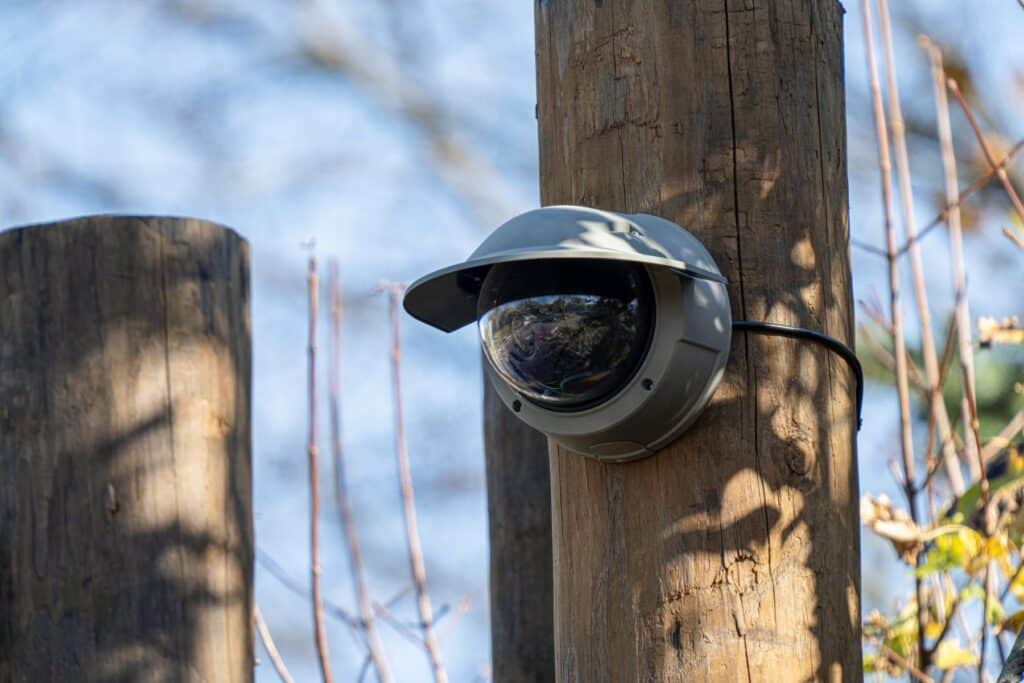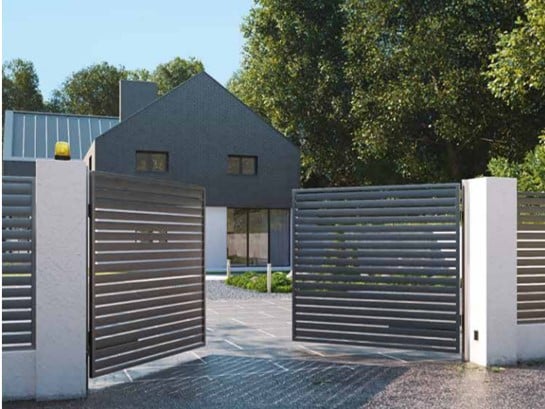Security cameras have become an invaluable tool in protecting properties, offering not only deterrence but also peace of mind. In Hamilton, with its mix of urban and rural settings, security cameras help reduce crime, monitor unwanted activity, and record evidence if needed.
These cameras enable property owners to monitor entry points, catch trespassers early, and provide a visible signal that the property is protected. The peace of mind from knowing you can monitor your property in real-time or review footage if an incident occurs cannot be overstated, especially in today’s environment where home and business security is a priority.
Hamilton presents unique challenges when it comes to security. Urban environments require monitoring for both crime and privacy, as houses are often closer together, while rural properties have vast areas to cover and may experience delays in emergency response times.
Furthermore, the blend of high-traffic neighbourhoods and remote areas means that security strategies need to be adaptable. Camera systems need to account for theft, vandalism, and even natural threats like storms, so robust and reliable systems are essential. By addressing Hamilton-specific security needs, property owners can achieve a safer environment for themselves and the wider community.
Key Areas to Place Security Cameras for Maximum Coverage
Front Entrance
Importance of Monitoring Primary Entry Points: The front entrance is the main access point for most properties, making it essential to monitor. Many break-ins occur through the front door, and a visible camera acts as a strong deterrent.
Camera Recommendations: Doorbell cameras are particularly effective for front entrances, providing a direct view of visitors and often equipped with two-way audio for real-time communication. For broader coverage, wide-angle cameras can capture the entire front approach to the house, including nearby pathways and gardens.
Positioning Tips: Place the camera at eye level or slightly higher, angled to capture faces clearly. Ensure the camera is within reach for cleaning but high enough to prevent tampering. Avoid obstructions like hanging plants or porch lights, which could create blind spots.
Back and Side Doors
Importance of Covering Secondary Entrances: Secondary entrances, such as back and side doors, are often less visible, making them attractive for intruders. Covering these areas provides an additional layer of protection.
Placement Tips: Ensure the camera captures the door without extending its view into the neighbours’ property, respecting privacy. Choose cameras with night vision for darker areas, and use motion detection features to alert you of any movement after hours.
Driveway and Garage
Vehicle Security and Threat Detection: Garages and driveways are common targets for theft, particularly if the vehicle or garage contents are visible. Cameras can monitor vehicles and alert you to potential threats.
Camera Suggestions: Motion-detection cameras are ideal for driveways, alerting you to unexpected movement without recording continuously. Infrared or low-light cameras work well for unlit driveways, while some may prefer to add motion-sensor lights for added security.
Yard and Perimeter Fencing
Enhanced Perimeter Security: Security cameras along perimeter fencing can detect potential trespassers before they reach the property. This is particularly important for larger properties or those with rural boundaries.
Night Vision Recommendations: For properties with little external lighting, night vision or thermal imaging cameras can capture activity in the dark. Position the camera high enough to prevent tampering, yet angled to monitor the immediate area along the fence.
Windows Facing Dark or Secluded Areas
Monitoring Secluded Entry Points: Windows in secluded areas can be vulnerable. Security cameras that cover these windows can deter break-ins and help catch intruders attempting to use these less visible points.
Pan-Tilt-Zoom (PTZ) Cameras: PTZ cameras work well for monitoring multiple windows, as they can pan and tilt to cover a wider area, reducing the need for multiple devices.
Basement Stairwells and Entrances
Protecting Often Overlooked Entry Points: Basement entrances are less visible and therefore more vulnerable to unauthorised entry. Monitoring these areas adds an extra level of security to the property.
Positioning Tips: Place cameras at eye level near stairwells or doors to capture any activity clearly. Motion-detection features can be useful in these low-traffic areas, so the camera only records if movement is detected.

Additional Spots for Comprehensive Coverage
Property Corners for Perimeter View
Perimeter Coverage: Installing cameras at the corners of the property can provide a complete perimeter view, covering areas that may otherwise be out of sight.
Wide-Angle Lenses: Use cameras with wide-angle lenses to capture expansive views of boundary areas. This setup can often reduce the need for multiple devices, saving costs and simplifying management.
Patios and Outdoor Living Spaces
Protecting Outdoor Assets: Patios often contain valuable items like furniture, grills, and outdoor equipment. Cameras here help deter theft and monitor any unauthorised access.
Discreet Camera Options: To maintain privacy, consider cameras that are discreet and blend into the landscape. Cameras can still be positioned effectively without being intrusive.
Children’s Play Areas or Pet Zones
Family and Pet Safety: Monitoring play areas or pet zones helps keep children and animals safe, providing parents and pet owners with peace of mind.
Audio-Enabled Options: Cameras with audio features allow you to listen in on activity or communicate with family members or pets. They can also be set up with alerts for any unexpected activity in these areas.
Tips for Camera Placement and Positioning
Height and Angle
Tamper-Resistant Positioning: Position cameras around 2.5 to 3 metres high to prevent tampering, while still capturing clear footage.
Balancing Visibility: Position cameras so they are visible enough to deter intruders but not too obtrusive. For example, place cameras near visible areas like entry points without making them the focal point.
Avoiding Blind Spots
Overlap Camera Views: Ensure that cameras cover each other’s blind spots, especially around corners and doorways.
PTZ Options for Large Areas: PTZ cameras can cover larger areas by moving to follow motion, which is helpful in yards or large spaces with multiple entrances.
Lighting Considerations
Well-Lit Placement: Avoid placing cameras in direct light, as this can interfere with footage. Use night-vision cameras for areas without external lighting.
Preventing Glare: Position cameras to avoid direct sunlight or street lights to prevent glare, which can distort video footage.
Weatherproofing and Durability
Hamilton’s Climate: Outdoor cameras should withstand Hamilton’s wet and cold winters as well as the humidity. Look for waterproof cameras with high IP ratings to ensure durability.
Special Considerations for Hamilton’s Urban vs. Rural Areas
Urban Settings
Respect for Privacy: In close-proximity neighbourhoods, be cautious about camera angles to avoid capturing neighbouring properties.
Neighbour Considerations: When needed, use privacy screens or settings on cameras to prevent footage of adjacent areas. This maintains good relations with neighbours while securing your property.
Rural Properties and Farms
Long-Range and Remote Monitoring: Rural properties may need long-range cameras or additional sensors to cover vast open spaces effectively.
Remote Access: Cameras with remote access and alerts provide extra security in rural areas where response times may be slower. They allow real-time monitoring from mobile devices, ideal for those managing large properties.
Privacy and Legal Considerations in Hamilton
New Zealand Privacy Laws for Security Cameras
Understanding Legal Boundaries: In New Zealand, security cameras should not capture footage of public spaces or neighbouring properties beyond what’s necessary. Respecting these boundaries avoids legal issues and promotes community trust.
Legal Installation Tips: Cameras must be positioned thoughtfully, avoiding shared or public areas wherever possible.
Respecting Neighbours’ Privacy
Neighbour Privacy Tips: Avoid cameras directed at neighbours’ private spaces and use visible signage to inform others of security measures.
Communication: Inform neighbours about your camera setup when appropriate to prevent misunderstandings, especially when cameras cover shared driveways or boundary lines.
Choosing the Right Security Camera System for Your Needs
Types of Cameras
Wired vs. Wireless: Wired cameras provide reliability but may require more complex installation. Wireless models offer flexibility but rely on strong Wi-Fi signals.
Solar-Powered Options: Solar-powered cameras work well in rural areas, where power sources may not be accessible.
Key Features to Look For
Motion Detection, Night Vision, and Remote Monitoring: Essential features for reliable security coverage. Motion detection saves on storage and only captures relevant activity, while night vision ensures visibility at all hours.
Integration with Smart Home Systems
Smart Home Compatibility: Smart home integration allows easy access and control over your security system. Systems that connect to apps offer remote monitoring, alerts, and live viewing, providing flexibility and convenience.
Installation Tips and Maintenance Advice
Professional vs. DIY Installation
Pros and Cons: Professional installation offers expertise, while DIY is more budget-friendly and adaptable. Consider the complexity of the setup when choosing between the two.
Routine Maintenance for Optimal Performance
Regular Checks: Regularly clean lenses, check for software updates, and test cameras to ensure they are functioning correctly.
Seasonal Adjustments
Adjusting for Weather and Foliage: As trees grow or seasons change, camera angles may need adjustment. Ensure that cameras are positioned to account for shifting sunlight and changing foliage.
Secure Your Home For Your Safety
By strategically placing cameras at primary entry points, secondary doors, driveways, and along property boundaries, you can ensure comprehensive coverage of your property. With thoughtful placement and a robust system, security cameras provide peace of mind and safety for Hamilton properties. Whether urban or rural, a well-planned camera system is an investment in security and assurance.




